Introduction
The Maratha Empire is one of the most powerful empires in Indian history, significantly influencing the future of Indian civilization.
with its power spanning across the Indian subcontinent during the 17th and 18th centuries.
This article aims to give due recognition to the Maratha Empire,
a legendary dynasty that is often overlooked in our school and NCERT textbooks.
In this article, we will look into the history, culture, and legacy of the Maratha Empire. From its origins to its downfall,
we will explore the political, social, and economic aspects of the Maratha Empire and the impacts it had on the Indian Society.
The Rise Of the Maratha Empire

Chhatrapati Shivaji Maharaj carved out the Maratha empire from the declining Adil Shahi sultanate of the Bijapur
Shivaji Raje was not only a great warrior but also a great diplomat as he engaged in both alliances and hostilities with the Mughal Empire and the with different European Colonial Powers.
Origins
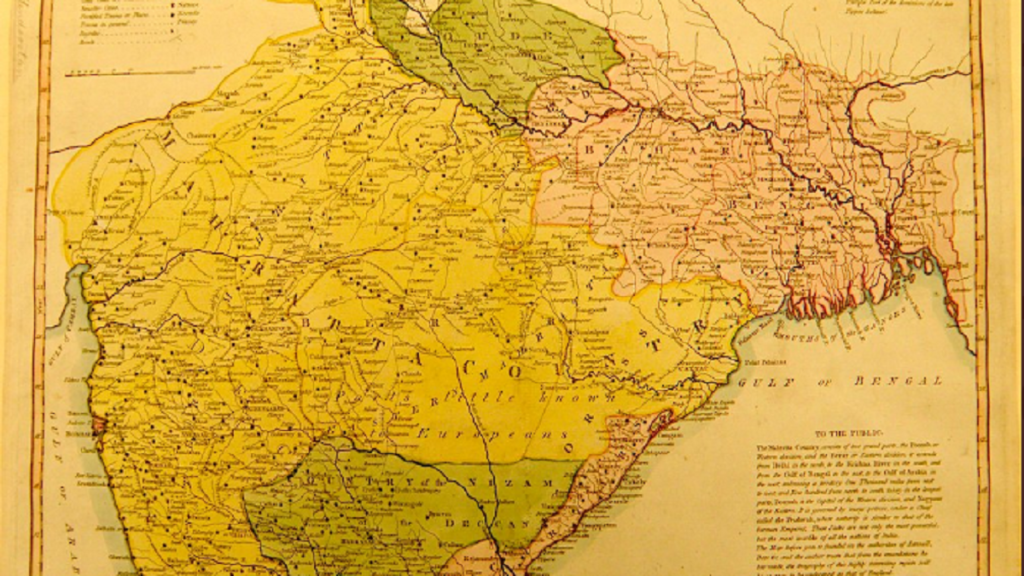
To understand the origins of the Maratha Empire we have to understand the conditions in which Shivaji Maharaj was born.
Shivaji Maharaj was born as a son of Jagirdar ( It was a type of feudal land gran in the Indian subcontinent also called Jamindars ).
During the historical period when Jamindars held power, they were considered direct vassals of the king and were granted land holdings. It was their responsibility to maintain a cavalry force to serve the king.
At the birth of Shivaji Maharaj the Mughal Empire was well established and was the most powerful empire in the Indian subcontinent. There were 3 different sultanates in the south of Madhya Pradesh in Maharashtra there was Nizam Shahi and in Karnataka, there was Adil Shahi and in present-day Andhra, there was qutub shahi and in the south, there was the declining Vijayanagar Empire which was very weak at that time.
How The Maratha Empire Formed
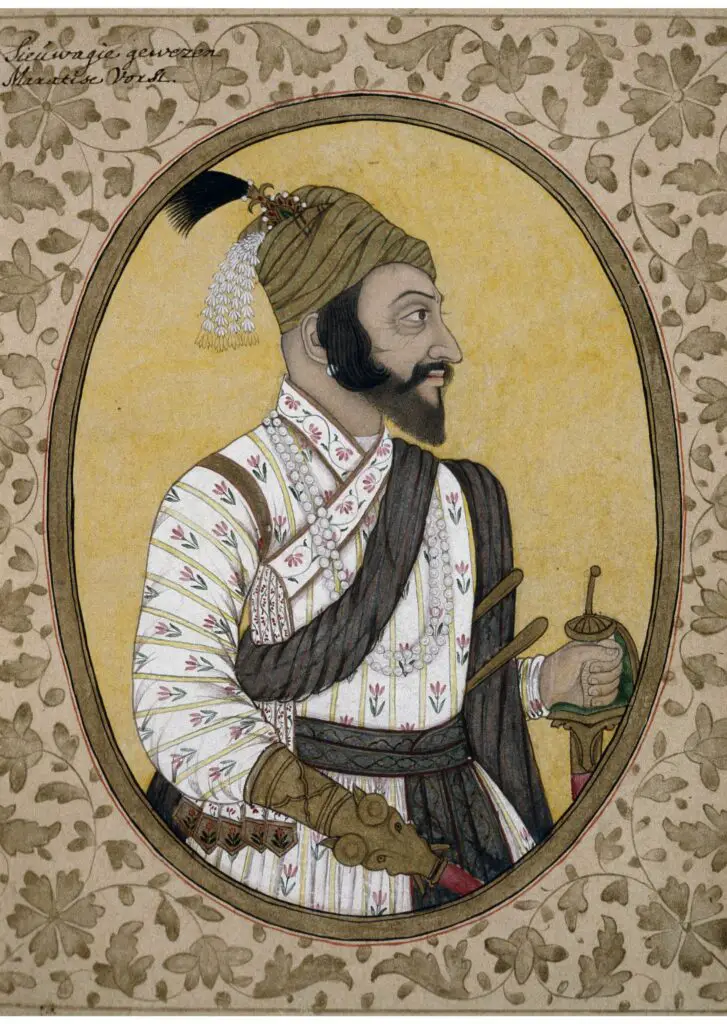
At the birth of Shivaji Raje the Mughal Empire was well established at that time (roughly 1630-1650) the Mughal Empire consisted of more than 200,0000 heavy-duty cavalry force.
They were very powerful when their cavil cade used to go from the village to the poor villager only by seeing the heavy-duty cavalry used to get scared by the force at the display it was like only by looking at the cavil cade people used to surrender.
Shivaji Maharaj caught a loophole in that system a flaw that the huge cavalry force is useless in the mountains and to win against such a huge force we can only do that with the use of the geography of Deccan to our advantage
Early Time.
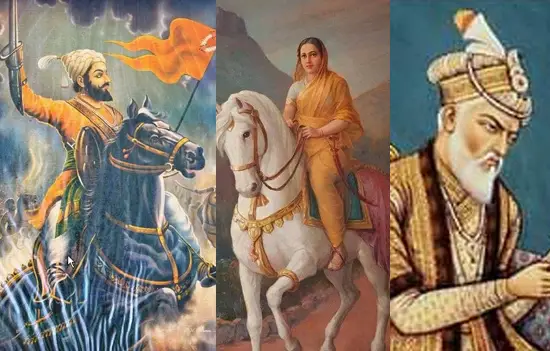
By the time Shivaji grows up Aurangzeb who starts out as the governor of the Deccan under his father at that time the Mughal Emperor eventually works his way to becoming the Mughal Emperor himself and becomes the Mughal and under Aurangzeb’s leadership, the Mughal empire geographical reach is the Greatest Ever.
During Akbar’s time, the Mughal Empire desired to invade and conquer the Deccan. Shivaji Raje’s father, Shahaji Bhosle, served as a military general for the Muslim sultanates in the Deccan. He proved to be a highly successful military general when he valiantly fought against the combined forces of the Mughal and Bijapur sultanate during the attack on the Nizam Shahi kingdom.
So the scenario is that Aurangzeb is soon becoming a challenge to the Mughal Throne and Bijapur is the most important Deccan power with the end of Nazim Shahi Mughal empire and Bijapur has divided the territories of Nazim Shahi among themselves.
The Great Visionary is Born.
In these conditions, Shivaji Raje is born then he saw that the main fight is between the Bijapur and the Mughals for the Deccan and eventually all of Southern India. Father of Shivaji Raje gives Pune as a jagir to Shivaji Raje to administer at the age of only 12 under the watch of his mother Jijabai.
Shivaji Maharaj in his teenage years what he starts doing that he starts mixing with the local population of Deccan and he realizes at the age of 14-16 that the system of Deccan under Muslim rule is an oppressive system for the people of south India he takes his initial few steps of rebellion.
At the age of 16, Shivaji Maharaj began issuing administrative orders in the region as the son of the Jagirdar. He made a significant decision to introduce a royal stamp for every administrator. Shivaji Maharaj personally issued his own royal stamp, which was inscribed in Sanskrit. This marked an important departure from the prevailing practice, as rulers and shahs at that time commonly issued their royal stamps in Persian, even Hindu kings opting for Persian rather than Sanskrit.
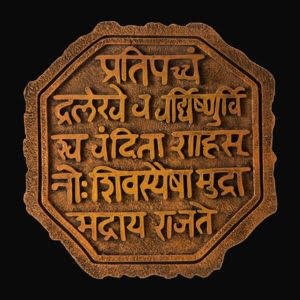
Early Life of Chhatrapati Shivaji Maharaj.
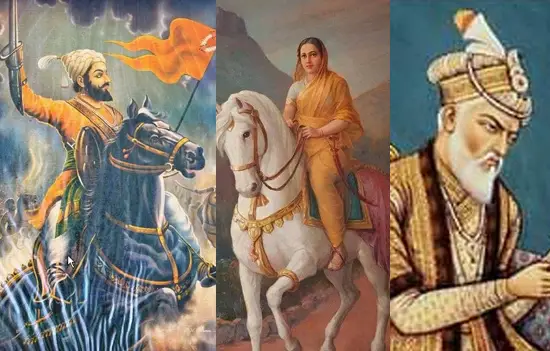
Another critical thing he does at the age of 16 was that there was a complaint from a local woman that she was sexually assaulted by the Patil of a village (means the head of the village) the first thing he does is that he verifies is the complaint correct or not then he came to know that this is a genuine complaint.
He asks his men to catch the village Patil and he gives him capital punishment (which means breaking his arms and legs) what this does is that it brings some kind of justice system that was missing at that time.
When Shivaji Maharaj gives that punishment the full mode of the local population changes they start seeing hope for themselves this was his first move but it is important as it sets a justice system.
At the age of 18 Shivaji Raje captures 4 forts belonging to Bijapur now this is a direct rebellion and this was his 2nd step.
Shivaji Maharaj has the natural ability to win over people and people see him as genuine eventually people start believing in him as somebody who can give their family and children a future. When he starts he is nobody but slowly with the support of the people he takes on the fight with the gigantic Mughal Empire. He not only influences the people of the Deccan with his rebellion but the whole of India.
Famous Battles and Achievements.
One of Shivaji’s most famous battles was the capture of the Torna Fort in 1646, which marked the beginning of his campaign to establish an independent Maratha state and crown himself as an Emperor.
In 1664, Shivaji raided the large Mughal-controlled port of Surat which was a major trading center. This raid made Shivaji Maharaj a hero among the Maratha people and was a major blow to the Mughal Rule.
Shivaji Maharaj died in 1680, because of his bad health but his legacy lived on. The Maratha Empire continued to expand under the leadership of his descendants, and later under the Peshwa’s, and eventually became one the most powerful empires in India.
How Shivaji Maharaj is Called as Father of the Indian Navy.
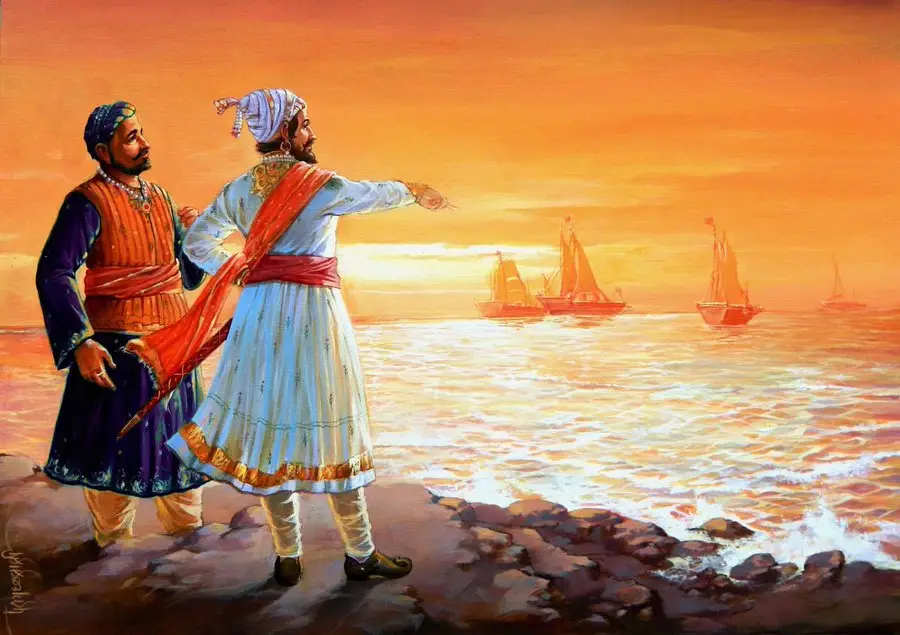
In the 17th century, the coasts of India were under threat from foreign powers like the Dutch, Portuguese, and British who were minting money in the king’s backyard.
Yet, very few Indian kings had built a powerful navy, as most of the kingdoms were land-based units. This rigid definition of the kingdom led to expanding and defending land boundaries being given the greatest importance.
Even the Mughals did not take the navy seriously, which was surprising, given that they had valuable commodities to trade.
However, there was one exception to this trend: Chhatrapati Shivaji Maharaj, who had extraordinary foresight to have a naval fleet.
He realized the importance of the navy by studying geography and understanding the nature of deep valleys, hilltops, narrow plateaus, and rivers.
Shivaji was an ardent student of geography and had prepared detailed maps of many regions of India, which helped him understand the trends, economics, and geography of different foreign lands.
How Shivaji Understood the Importance of Having a Strong Navy.
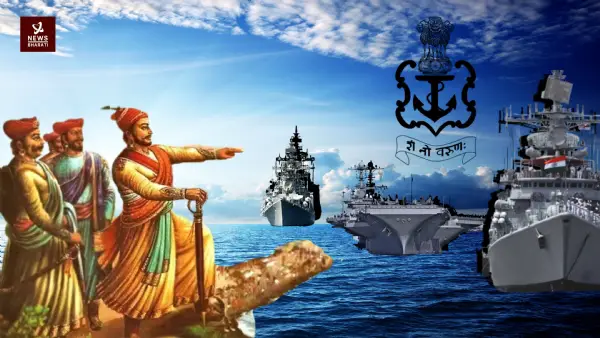
Even though Shivaji did not have vast lands or hundreds of forts under him, his keen interest in geography and conversations with foreigners helped him realize that there was something very important happening in the oceans with ships.
After consolidating his position in Tekken, Shivaji set his eyes on the coastal waters of Konkan, a region that extends throughout the western coast of Maharashtra, Goa, and Karnataka and is bounded by the Western Ghats in the east.
Shivaji built one of the most extraordinary naval fleets in Indian history, which sent jitters down the spines of the British and Portuguese who were trying to control the coastlines since the 17th century. Legends have it that had it not been for Chhatrapati Shivaji Maharaj, India would have been looted by the British for another 200 years. He laid the foundations for the powerful Maratha Empire, which eventually became a significant player in Indian politics.
The Maratha navy played a crucial role in Shivaji’s strategy to expand its territory and defend it from foreign powers. The Navy was divided into two parts: one was responsible for coastal defense, and the other was responsible for the offense. The coastal defense fleet consisted of smaller ships that patrolled the coastlines, while the offensive fleet consisted of larger warships that could sail into enemy territory.
Naval Battles of the Maratha Empire.
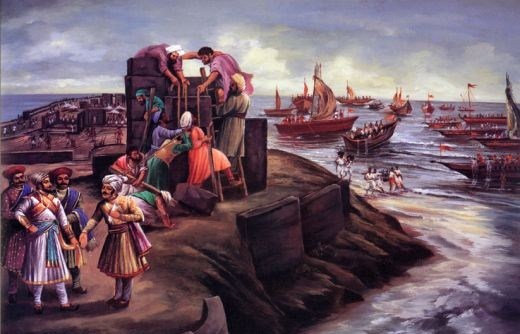
One of Shivaji’s most famous naval victories was the Battle of Swally in 1690. The Maratha navy, under the command of Daulat Khan, defeated the British navy, which was trying to blockade the port of Surat. This victory showed the British that the Marathas were not to be taken lightly and marked a significant turning point in the history of Indian naval warfare.
The Maratha navy also helped Shivaji establish control over important ports along the west coast of India, which enabled him to trade with foreign powers on his own terms. Shivaji realized the importance of trade and commerce and used the navy to protect Indian traders from foreign powers.
In conclusion, Chhatrapati Shivaji Maharaj’s extraordinary foresight in building a powerful navy helped him lay the foundations for the Maratha Empire and defend India’s coastlines from foreign powers. His strategy of using the navy for both defense and offense, along with his focus on trade and commerce, helped establish the Marathas as a significant player in Indian politics. His legacy continues to inspire generations, and his naval strategy is still studied by military historians and business leaders alike.
Maratha Empire After Shivaji Maharaj
Sambhaji Maharaj (1680-1689)
After the death of Shivaji Maharaj in 1680, the Maratha Empire continued under the leadership of his son, Sambhaji Maharaj. However, Sambhaji Maharaj’s rule was short-lived as he was captured and tortured by the Mughals under Aurangzeb and eventually died in 1689.
His death become a major blow to the Maratha Empire as he was considered a capable and popular leader much like his father.
Despite his short rule he is considered and remembered as a strong and courageous skilled warrior who fought to defend the Maratha Empire.
I have to say one line about Sambhaji Maharaj “He never lost on the battlefield he was a skilled warrior but he lost to history” If Shivaji Maharaj gave birth to the Swarajya movement then Sambhaji Maharaj kept it alive!
how was Sambhaji Maharaj tortured and killed?
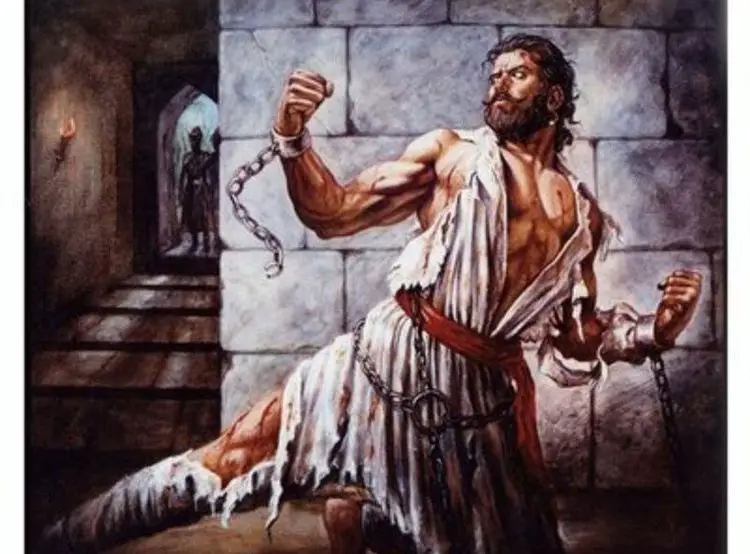
Sambhaji Maharaj, the king of the Maratha Empire, was captured by the Mughal Emperor Aurangzeb’s army in 1689. Aurangzeb had been trying to subdue the Maratha Empire, and Sambhaji’s capture was a major victory for him.
Sambhaji was subjected to brutal torture by the Mughal army in an attempt to force him to disclose the location of the Maratha Empire’s treasure. He was also asked to convert to Islam, but he refused. The torture included plucking out his eyes, cutting off his tongue and his limbs, and pouring hot oil on his wounds.
Despite the torture, Sambhaji refused to reveal the location of the treasure or convert to Islam. He was eventually sentenced to death and was executed in a brutal manner. Sambhaji was tied to a stake and was attacked with weapons, including swords until he died.
Rajaram Maharaj (1689-1700)
After the death of Sambhaji Maharaj, his younger brother Rajaram Maharaj became the king of the Maratha Empire. Rajaram faced several challenges during his reign, including the Mughal Empire’s attacks and internal conflicts between different Maratha factions.
Despite these difficulties, Rajaram was able to preserve and even extend the empire’s realms. But Rajaram’s health declined, and he passed away in 1700.
Tarabai(1700-1708)
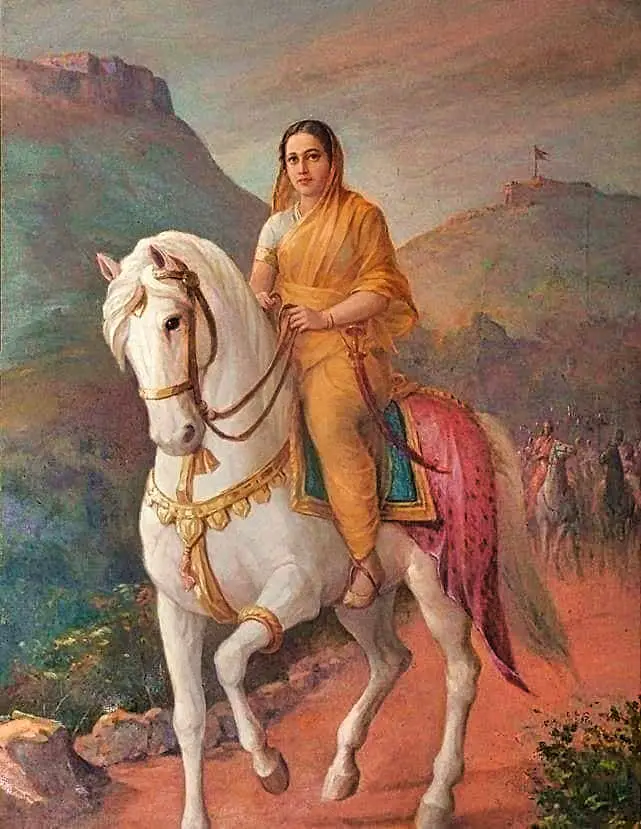
After Rajaram passed away, his widow Tarabai assumed control over her infant son Shivaji II. Despite internal strife and outside dangers, Tarabai proved to be a skilled leader who was able to maintain the Maratha Empire’s unity.
The history of the Maratha Empire was significantly impacted by Tarabai, a strong woman. She assumed control as the regent for her infant son, Shivaji II, after the death of her husband, Rajaram Maharaj, in 1700. Despite internal strife and outside dangers, Tarabai proved to be a skilled leader who was able to maintain the Maratha Empire’s unity.
Tarabai encountered several difficulties during her rule, including assaults by the Mughal Empire and battles with rival Maratha groups. She was able to keep the empire’s lands intact and even proceeded to grow it. The Maratha Empire’s position was bolstered by the treaties Tarabai signed with local governments. Tarabai was renowned for her diplomatic abilities.
Tarabai was also a supporter of the arts and culture, and she helped the Maratha Empire’s literature and musical traditions grow. She is regarded as a fearless and forward-thinking leader who made a significant contribution to the history of the Maratha Empire.
However, there were a few controversies throughout Tarabai’s rule. Some Maratha groups opposed her and charged her with favoritism and nepotism. Additionally, there were disagreements on the throne’s succession, which sparked internal strife and power battles.
Despite these difficulties, Tarabai was able to hold onto her role as regent and administer the Maratha Empire until her son Shivaji II reached the required age. The memory of Tarabai continues to be a significant aspect of Maratha’s history, and she is As one of the most significant women in Indian history, she will be remembered.
Peshwas (1732–1818)

Origins and Establishment of the Peshwa Office:
The Peshwa office was established by Balaji Vishwanath in 1713, during the reign of Chhatrapati Shahu, the grandson of Chhatrapati Shivaji Maharaj, the founder of the Maratha Empire. Balaji Vishwanath successfully secured the position of Peshwa, and from then on, the Peshwas held significant power and influence in the empire.
Administrative and Political Achievements:
Under the Peshwas, the Maratha Empire experienced remarkable administrative and political stability. They introduced a well-structured administrative system, with a focus on efficient revenue collection, land reforms, and consolidation of territories. The Peshwas also played a crucial role in maintaining unity among the Maratha chiefs and resolving internal conflicts.
Expansion and Military Strategies:
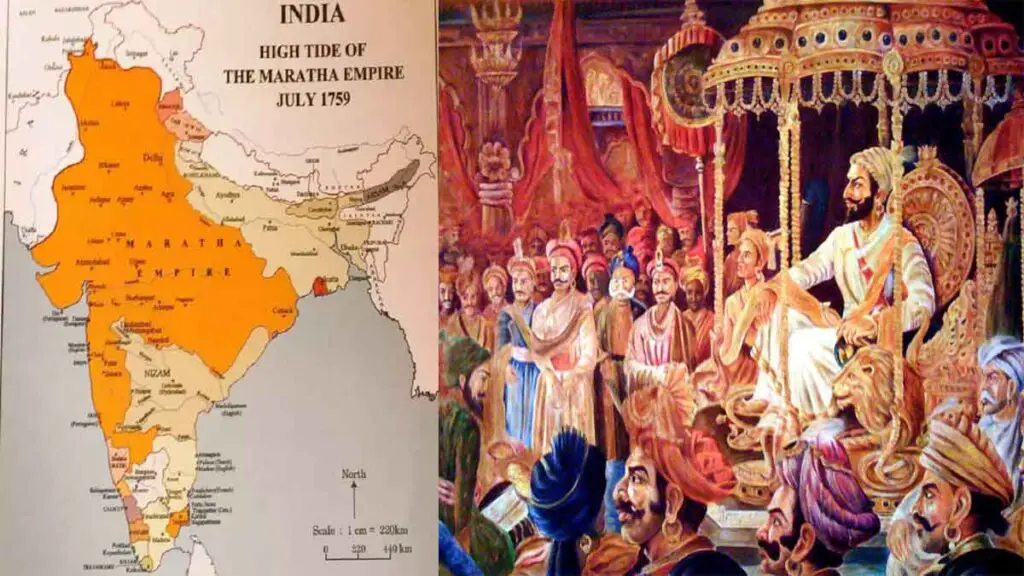
The Peshwas were skilled military commanders and played a pivotal role in expanding the Maratha Empire. They led several successful military campaigns, including the conquest of territories in Northern India, Gujarat, Malwa, and Bengal. The most prominent military achievement was the decisive victory over the Mughals in the Third Battle of Panipat in 1761, although it later proved to be a turning point in the decline of Maratha power.
Legacy and Historical Significance:
The Peshwas left an indelible mark on Indian history. Their rule saw the consolidation and expansion of the Maratha Empire, making it one of the most powerful political entities in the 18th century. The administrative and military strategies employed by the Peshwas set precedents for future Indian rulers. The decline of the Maratha Empire also paved the way for British colonization, making the Peshwa era a significant turning point in Indian history.
The Decline of the Maratha Empire.
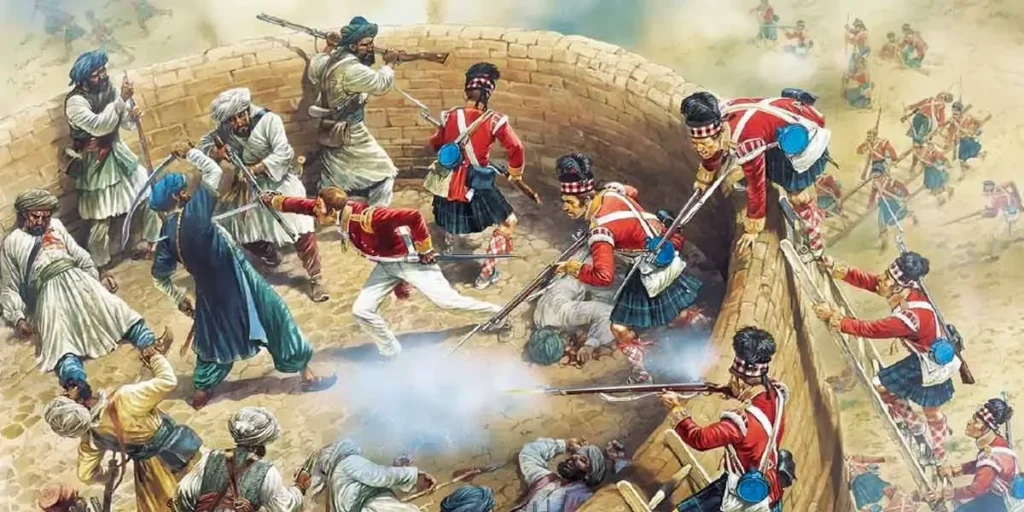
Power gradually shifted to Shivaji Maharaj’s generals, and under the leadership of Peshwa Baji Rao, the prime minister, the Marathas displayed exceptional strategic prowess. Throughout his 20-year tenure as Peshwa, Baji Rao defeated the Mughals and their vassal, Nizam ul Mulk, in several battles, including the Battle of Bhopal and the Battle of Delhi. These victories established Maratha supremacy in southern India and solidified their political influence in the north. In the aftermath, the Mughals were compelled to make peace, relinquishing a significant portion of central India to the Marathas and paying substantial war reparations. This outcome greatly weakened the Mughal Empire after the demise of Shahu Ji.
The Chhatrapati became a ceremonial role but the real executive power rested with the Peshwa the mural capital of Delhi was again sacked and conquered by Natasha and Rohila of Hans making the Mughals weaker than ever before in their entire history
Maratha vs Mughal Empire
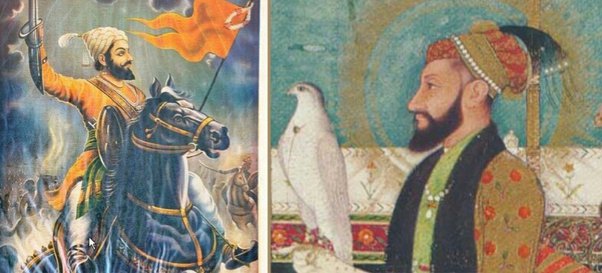
When the Marathas conquered Delhi again they established the Mghaul emperor as the puppet ruler with Mughal territory only being the city of Delhi itself as the empire reached its heightened power they became increasingly decentralized the Peshwa exceeded more and more power to the local Maratha rulers and generals while his position became more ceremonial and the empire became more of a confederacy than a monarch
That same year the British East India Company established direct rule over Bengal defeating the coalition of French Bengal and Mughals in 1775 British concentrated their attention on the Marathas which began with the Treaty of Surat and ended with the Treaty of Salbai The Marathas stood victorious and the British made peace to avoid further collapse both
The Anglo-Maratha Wars (1775-1818).
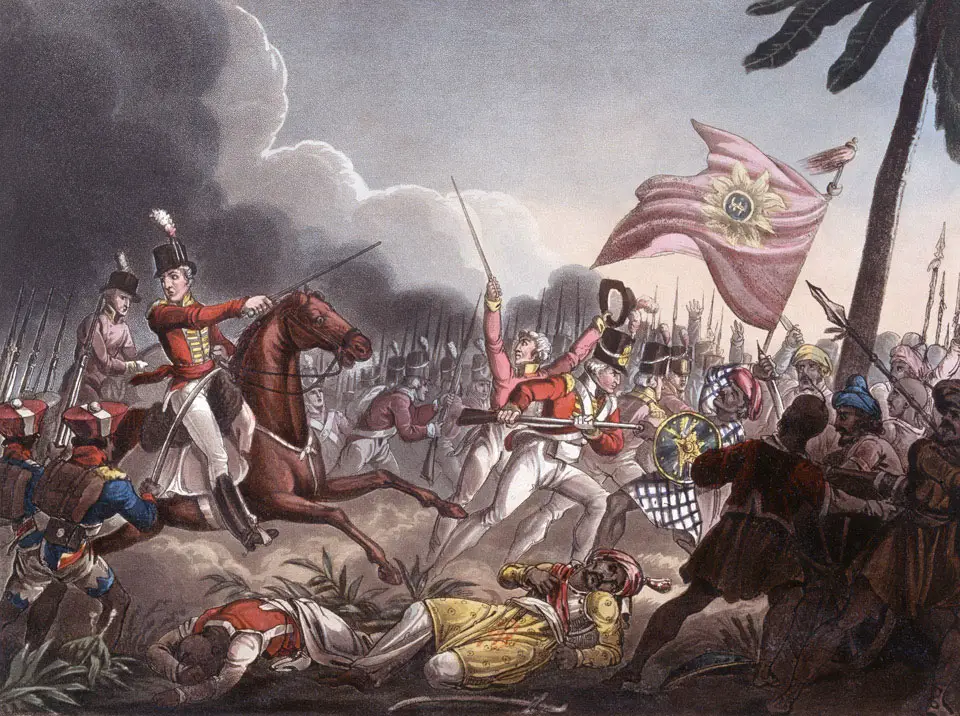
In 1803, the British East India Company initiated the conquest of southern India before resuming the war against the Marathas. After making territorial gains, a peace treaty was signed. However, the final and decisive Third Anglo-Maratha War commenced with the invasion of Maratha territory by British East India Company troops. Despite being outnumbered, the British emerged victorious over the Marathas, resulting in the Company gaining control over most of India.
The Marathas left an exceptional legacy in Indian history, with their army, particularly the infantry, earning praise from their adversaries, ranging from the Duke of Wellington to Ahmad Shah Abdali. Although the Maratha Empire did not survive the onslaught of its formidable enemies, it played a significant role in fostering a sense of nationalism among the Hindu population, ultimately contributing to the struggle for the creation of India.
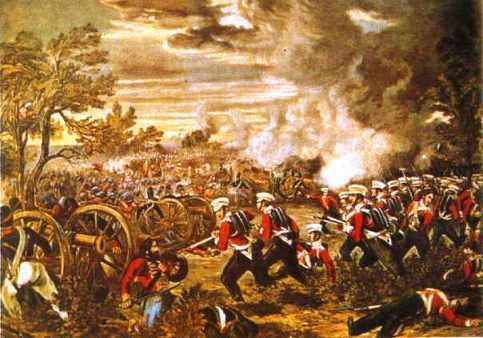
Conclusion
In conclusion, I would say Maratha Empire was an amazing empire that led to the foundation of the later revolt against the British Empire and led the foundation of modern India.
If Maratha Empire did not exist there will be no temples, India would not be a secular nation and it would rather have been a Sharia nation just like Afghanistan so Maratha Empire just changed the course of Indian history.

The overall reason for me to write this blog post was to give justice to the legacy of the Great Maratha Empire which our school textbooks have forgotten from the chapters of history. It is important for our youth to read about this legendary Dynasty, and what it means to be free.
Thank you, everyone, for reading!
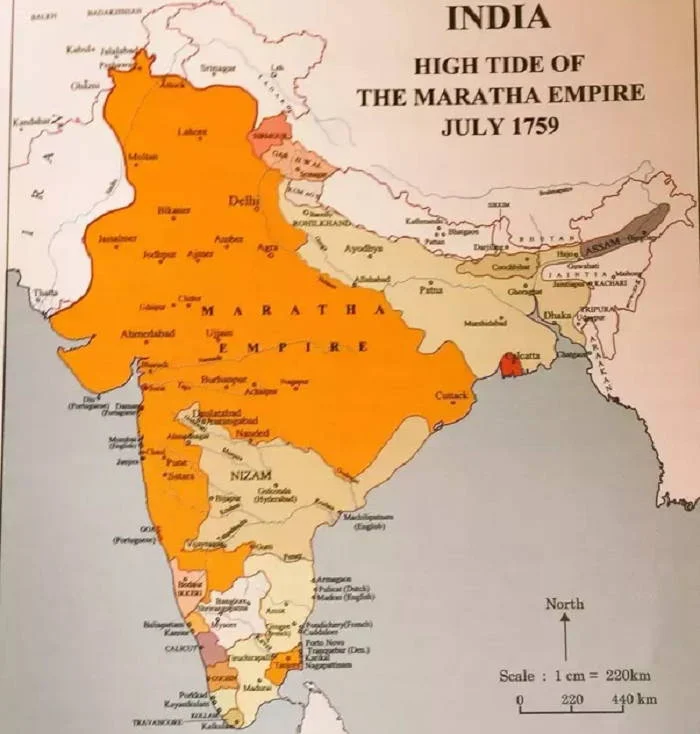

[…] The Rise of the Great Maratha Empire! […]
[…] an organized government system, revenue management and an ethical code known by the name of “Hindavi Swarajya.” Shivaji Maharaj also emphasized the importance of tolerance for religion and promoted the harmony […]
[…] conclusion, Lalitaditya Muktapida, the powerful ruler of the Karkota dynasty, continues to captivate the imagination of historians, scholars, and […]
[…] The Maratha Empire, prominently known for its vast expansion and dominance, holds a significant place in Indian history. Spanning from the late 17th century to the early 19th century, the Maratha Empire emerged as a formidable force in the Indian subcontinent. […]